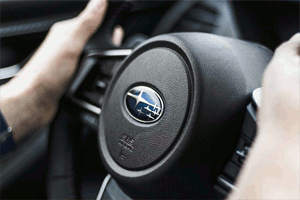Road safety: technology to reduce road accidents
 In the member states of the European Union, vehicle safety is one of the main focuses aiming to reduce road accidents and their ensuing damage.
In the member states of the European Union, vehicle safety is one of the main focuses aiming to reduce road accidents and their ensuing damage.
In what follows, Atlas Magazine lists the technologies that can save the life of a car driver or a motorcycle rider.
Road safety: On-board technologies in cars
The Bluetooth hands-free kit
The hands-free kit is an alternative to the traditional use of mobile phones by car drivers. It allows motorists to make phone calls while staying focused on the road. However the distraction caused by a telephone call remains dangerous or even fatal.
The drowsiness detection system
The drowsiness detector uses a camera system to detect whether drivers are tired or drowsy. This technological system monitors the driver's eyelids and the movements of his eyes and head. In the event of drowsiness, an alarm is triggered automatically.
The first drowsiness detection systems are based on the time spent behind the wheel. After a two-hour driving period, a warning light symbolizing a cup of coffee appears in front of the driver to incite him to rest.
The alcohol ignition interlock
The alcohol ignition interlock is probably an invention that will save the biggest number of lives in the future. This device could become mandatory for all vehicles.
This alcohol-activated vehicle immobilizer is a small device that measures the level of alcohol in blood. Nothing extraordinary, one would say! This device prevents the vehicle from starting in the event of a blood alcohol level higher than that authorized by legislation. It's much more effective than police control.
The road heating system
Developed in France, the road heating system captures solar energy, which it then uses to melt snow and ice. This "positive energy" road is a significant time-saver not only for drivers but also for authorities who are no longer dependent on snow plows to manage tough weather conditions.
The electronic stability control
This technology allows drivers to keep control of their vehicle in hazardous conditions. The electronic stability control reduces engine power by automatically triggering brake pulses on the wheels. This technique makes it possible to maintain the orientation of the vehicle on the road.
The automatic tyre controller
The system informs the driver of the tyre pressure level through the use of an indicator.
The effectiveness of the road safety mechanism has encouraged the US authorities to impose the installation of this system on all vehicles from 2007.
Road Safety: Life-saving technologies for motorcyclists
The airbag vest
The airbag vest has the same function as the car airbag. In the event of an accident, it inflates to absorb the shock and support the cervical vertebra, the back, the thorax and different parts of the motorcyclist's abdomen. In order for the system to work, a small box must be installed on the bike. It includes shock detectors and a radio transmitter that triggers the inflation of the vest.
Smart helmets
Equipped with integrated detectors, cameras and displays, smart helmets are a revolution for motorcyclists. They allow them to see what is happening at the back of the motorbike while keeping their eyes focused on the road. These helmets can also display GPS information as well as speed without the motorcyclist looking at the dashboard.
Smart helmets can also control a smartphone by voice. Finally, visors change color to provide better visibility while riding.
